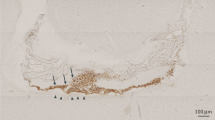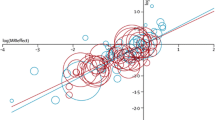Abstract
Multiple sclerosis (MS) is thought to be an autoimmune disease with a chronic inflammatory response directed against central nervous system (CNS) myelin antigens. Immunologic studies indicate that autoreactive CD4+ lymphocytes migrate into the CNS causing blood brain barrier (BBB) disruption, an initial event in the evolution of the MS lesion. Subsequent antigen recognition within the CNS initiates inflammatory responses that, through the multiple effector mechanisms, lead to demyelination. Magnetic resonance imaging (MRI) studies provide new insights into the evolution of the MS lesion, revealing an active and continuous pathologic process that is not only localized to focal lesions, but also diffusely affects normal appearing white matter (NAWM). Standard T2-weighted images are exquisitely sensitive, showing changes due to inflammation, edema, demyelination, and axonal loss, but because of the lack of pathologic specificity, they only moderately correlate with the clinical parameters. New MRI techniques, including magnetic resonance spectroscopy, magnetization transfer, and diffusion imaging, provide a better measure of axonal loss and demyelination, the most clinically relevant components of MS lesions. Hopefully, they will enable us to more accurately monitor disease activity and evaluate the effects of new therapies on the progression of the disease.
Similar content being viewed by others
References and Recommended Reading
Cannella B, Raine CS: The adhesion molecule and cytokine profile of multiple sclerosis lesions. Ann Neurol 1995, 37:424–435.
Bo L, Mork S, Kong PA, et al.: Detection of MHC class IIantigens on macrophages and microglia, but not on astrocytes and endothelia in active multiple sclerosis lesions. J Neuroimmunol 1994, 51:135–146.
Babbe H, Roers A, Waisman A, et al.: Clonal expansions of CD8(+) T cells dominate the T cell infiltrate in active multiple sclerosis lesions as shown by micromanipulation and single cell polymerase chain reaction. J Exp Med 2000, 192:393–404. T-cell receptor repertoire of CD4+ and CD8+ cells infiltrating actively demyelinating multiple sclerosis (MS) lesions was determined at the single cell level. Expanded CD8+ T-cell clones were predominantly identified in MS lesions.
Cross AH, Cannella B, Brosnan CF, et al.: Homing to central nervous system vasculature by antigen-specific lymphocytes. I. Localization of 14C-labeled cells during acute, chronic, and relapsing experimental allergic encephalomyelitis. Lab Invest 1990, 63:162–170.
Lucchinetti C, Bruck W, Parisi J, et al.: A quantitative analysis of oligodendrocytes in multiple sclerosis lesions. A study of 113 cases. Brain 1999, 122:2279–2295.
Scolding N, Franklin R, Stevens S, et al.: Oligodendrocyte progenitors are present in the normal adult human CNS and in the lesions of multiple sclerosis. Brain 1998, 121:2221–2228.
Trapp BD, Peterson J, Ransohoff RM, et al.: Axonal transection in the lesions of multiple sclerosis. N Engl J Med 1998, 338:278–285.
Ferguson B, Matyszak MK, Esiri MM, et al.: Axonal damage in acute multiple sclerosis lesions. Brain 1997, 120:393–399.
Bielekova B, Goodwin B, Richert N, et al.: Encephalitogenic potential of the myelin basic protein peptide (amino acids 83-99) in multiple sclerosis: results of a phase II clinical trial with an altered peptide ligand. Nat Med 2000, 6:1167–1175. In this clinical trial, the treatment with altered peptide ligand adversely increased the frequency of T cells cross-reactive with myelin basic protein epitope 83–99.
Scholz C, Patton KT, Anderson DE, et al.: Expansion of autoreactive T cells in multiple sclerosis is independent of exogenous B7 costimulation. J Immunol 1998, 160:1532–1538.
Lovett-Racke AE, Trotter JL, Lauber J, et al.: Decreased dependence of myelin basic protein-reactive T cells on CD28-mediated costimulation in multiple sclerosis patients. A marker of activated/memory T cells. J Clin Invest 1998, 101:725–730.
Schirmer M, Vallejo AN, Weyand CM, et al.: Resistance to apoptosis and elevated expression of Bcl-2 in clonally expanded CD4+CD28-T cells from rheumatoid arthritis patients. J Immunol 1998, 161:1018–1025.
Tivol EA, Borriello F, Schweitzer AN, et al.: Loss of CTLA-4 leads to massive lymphoproliferation and fatal multiorgan tissue destruction, revealing a critical negative regulatory role of CTLA-4. Immunity 1995, 3:541–547.
Bachmaier K, Krawczyk C, Kozieradzki I, et al.: Negative regulation of lymphocyte activation and autoimmunity by the molecular adaptor Cbl-b. Nature 2000, 403:211–216.
Thornton AM, Shevach EM: CD4+CD25+ immunoregulatory T cells suppress polyclonal T cell activation in vitro by inhibiting interleukin 2 production. J Exp Med 1998, 188:287–296.
Read S, Malmstrom V, Powrie F: Cytotoxic T lymphocyteassociated antigen 4 plays an essential role in the function of CD25(+)CD4(+) regulatory cells that control intestinal inflammation. J Exp Med 2000, 192:295–302.
Hemmer B, Gran B, Zhao Y, et al.: Identification of candidate T-cell epitopes and molecular mimics in chronic Lyme disease. Nat Med 1999, 5:1375–1382. In a patient with chronic neuroborreliosis, the authors identified a range of T-cell ligands from Borrelia burgdorferi and self-tissues.
Challoner PB, Smith KT, Parker JD, et al.: Plaque-associated expression of human herpesvirus 6 in multiple sclerosis. Proc Natl Acad Sci U S A 1995, 92:7440–7444.
Sriram S, Stratton CW, Yao S, et al.: Chlamydia pneumoniae infection of the central nervous system in multiple sclerosis. Ann Neurol 1999, 46:6–14.
Hemmer B, Vergelli M, Gran B, et al.: Predictable TCR antigen recognition based on peptide scans leads to the identification of agonist ligands with no sequence homology. J Immunol 1998, 160:3631–3666.
Evans CF, Horwitz MS, Hobbs MV, et al.: Viral infection of transgenic mice expressing a viral protein in oligodendrocytes leads to chronic central nervous system autoimmune disease. J Exp Med 1996, 184:2371–2384.
Horwitz MS, Bradley LM, Harbertson J, et al.: Diabetes induced by Coxsackie virus: initiation by bystander damage and not molecular mimicry. Nat Med 1998, 4:781–785.
Carrithers MD, Visintin I, Kang SJ, et al.: Differential adhesion molecule requirements for immune surveillance and inflammatory recruitment. Brain 2000, 123:1092–1101.
Hickey WF, Hsu BL, Kimura H: T-lymphocyte entry into the central nervous system. J Neurosci Res 1991, 28:254–260.
Brabb T, von Dassow P, Ordonez N, et al.: In situ tolerance within the central nervous system as a mechanism for preventing autoimmunity. J Exp Med 2000, 192:871–880.
Krakowski ML, Owens T: Naive T lymphocytes traffic to inflamed central nervous system, but require antigen recognition for activation. Eur J Immunol 2000, 30:1002–1009.
Sallusto F, Lenig D, Forster R, et al.: Two subsets of memory T lymphocytes with distinct homing potentials and effector functions. Nature 1999, 401:708–712.
Strunk T, Bubel S, Mascher B, et al.: Increased numbers of CCR5+ interferon-gamma- and tumor necrosis factoralpha-secreting T lymphocytes in multiple sclerosis patients. Ann Neurol 2000, 47:269–273.
Lucchinetti C, Bruck W, Parisi J, et al.: Heterogeneity of multiple sclerosis lesions: implications for the pathogenesis of demyelination. Ann Neurol 2000, 47:707–717. A pathologic study on a large number of actively demyelinating lesions indicates a very heterogenous nature of multiple sclerosis lesions.
Genain CP, Cannella B, Hauser SL, et al.: Identification of autoantibodies associated with myelin damage in multiple sclerosis. Nat Med 1999, 5:170–175.
Wolswijk G: Oligodendrocyte survival, loss and birth in lesions of chronic-stage multiple sclerosis. Brain 2000, 123:105–515.
Yao DL, Liu X, Hudson LD, et al.: Insulin-like growth factor-I given subcutaneously reduces clinical deficits, decreases lesion severity and upregulates synthesis of myelin proteins in experimental autoimmune encephalomyelitis. Life Sci 1996, 58:1301–1306.
McDonald JW, Liu XZ, Qu Y, et al.: Transplanted embryonic stem cells survive, differentiate and promote recovery in injured rat spinal cord. Nat Med 1999, 5:1410–1412.
Bitsch A, Schuchardt J, Bunkowski S, et al.: Acute axonal injury in multiple sclerosis. Correlation with demyelination and inflammation. Brain 2000, 123:1174–1183.
Smith ME, Stone LA, Albert PS, et al.: Clinical worsening in multiple sclerosis is associated with increased frequency and area of gadopentetate dimeglumine-enhancing magnetic resonance imaging lesions. Ann Neurol 1993, 33:480–489.
O’Riordan JI, Thompson AJ, Kingsley DP, et al.: The prognostic value of brain MRI in clinically isolated syndromes of the CNS. A 10-year follow-up. Brain 1998, 121:495–503.
Filippi M, Iannucci G, Tortorella C, et al.: Comparison of MS clinical phenotypes using conventional and magnetization transfer MRI. Neurology 1999, 52:588–594.
Brex PA, O’Riordan JI, Miszkiel KA, et al.: Multisequence MRI in clinically isolated syndromes and the early development of MS. Neurology 1999, 53:1184–1190.
Lee MA, Smith S, Palace J, et al.: Spatial mapping of T2 and gadolinium-enhancing T1 lesion volumes in multiple sclerosis: evidence for distinct mechanisms of lesion genesis? Brain 1999, 122:1261–1270.
Filippi M, Yousry T, Horsfield MA, et al.: A high-resolution three-dimensional T1-weighted gradient echo sequence improves the detection of disease activity in multiple sclerosis. Ann Neurol 1996, 40:901–907.
Filippi M, Rocca MA, Martino G, et al.: Magnetization transfer changes in the normal appearing white matter precede the appearance of enhancing lesions in patients with multiple sclerosis. Ann Neurol 1998, 43:809–814.
Stevenson VL, Leary SM, Losseff NA, et al.: Spinal cord atrophy and disability in MS: a longitudinal study. Neurology 1998, 51:234–238.
Werring DJ, Brassat D, Droogan AG, et al.: The pathogenesis of lesions and normal-appearing white matter changes in multiple sclerosis: a serial diffusion MRI study. Brain 2000, 123:1667–1676.
De Stefano N, Narayanan S, Matthews PM, et al.: In vivo evidence for axonal dysfunction remote from focal cerebral demyelination of the type seen in multiple sclerosis. Brain 1999, 122:1933–1939.
Sarchielli P, Presciutti O, Pelliccioli GP, et al.: Absolute quantification of brain metabolites by proton magnetic resonance spectroscopy in normal-appearing white matter of multiple sclerosis patients. Brain 1999, 122:513–521.
Jacobs LD, Beck RW, Simon JH, et al.: Intramuscular interferon beta-1a therapy initiated during a first demyelinating event in multiple sclerosis. CHAMPS Study Group. N Engl J Med 2000, 343:898–904.
Truyen L, van Waesberghe JH, van Walderveen MA, et al.: Accumulation of hypointense lesions ("black holes") on T1 spin-echo MRI correlates with disease progression in multiple sclerosis. Neurology 1996, 47:1469–1476.
Fox NC, Jenkins R, Leary SM, et al.: Progressive cerebral atrophy in MS: a serial study using registered, volumetric MRI. Neurology 2000, 54:807–812.
Author information
Authors and Affiliations
Rights and permissions
About this article
Cite this article
Markovic-Plese, S., McFarland, H.F. Immunopathogenesis of the multiple sclerosis lesion. Curr Neurol Neurosci Rep 1, 257–262 (2001). https://doi.org/10.1007/s11910-001-0028-4
Issue Date:
DOI: https://doi.org/10.1007/s11910-001-0028-4




